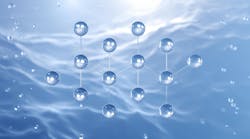One big theme of 2013 thus far seems to be a newfound appreciation for water. We keep hearing the saying, “Water is the new oil”—the new gold, even. As “The Ripple Effect” author Alex Prud’homme put it, “Today we no longer have the luxury of ignorance: We must understand how our actions impact the earth’s limited supply of fresh water, and learn to value H2O more highly.”
The issue is so poignant that the U.S. Environmental Protection Agency (EPA) released a report a few months ago titled, “The Changing Value of Water to the U.S. Economy: Implications From Five Industrial Sectors,” developed by consulting firm CH2M Hill.
The report, which was developed as part of EPA’s initiative, “The Importance of Water to the United States Economy,” examined the critical role water plays in industrial production and the U.S. economy, and how the value of water is changing in five industrial sectors: semiconductor manufacturing, thermal power generation, mining, chemicals, and oil and gas. It included stories of how companies within these industries are engaging in water policy decisions, reporting water use and improving water process efficiency to get the most from their water.
What began as a line item to be minimized clearly has become a strategic business objective. For instance, Intel is spending more than $200 million on public infrastructure, including water and wastewater facilities, at its Arizona facilities, and has partnered with the city of Chandler, Ariz., to implement water usage technologies benefitting itself and the local community. The Frito-Lay plant in San Antonio has saved 1 billion gal of water per year since implementing conservation efforts in 1999. Frito-Lay recycles the water it uses to make snack products, and has significantly reduced its freshwater use that way.
EPA’s report cited a common set of challenges faced by different industries, including increased competition for water, potential for business disruption because of changes in volume or quality of water, and efforts to increase water efficiency and plans for contingencies.
As industries tackle these challenges and maximize their position with regard to water resources, EPA is working on better understanding just how much water means to the U.S. economy. The report is meant to organize what EPA deems an incomplete set of insights into a comprehensive document detailing the importance of water for various industrial sectors, in hopes that it will spark broader discussion on the role of water in the U.S. economy overall. The study is expected to be completed sometime in 2013.
As H2O takes center stage in the collective conscious, water professionals must keep asking themselves the million-dollar question: What else can we do to make our water use sustainable? The most natural answer is that we need to change the way we value water. We need to focus on efficiency and conservation. It’s not just a best practice anymore—it’s an imperative.

